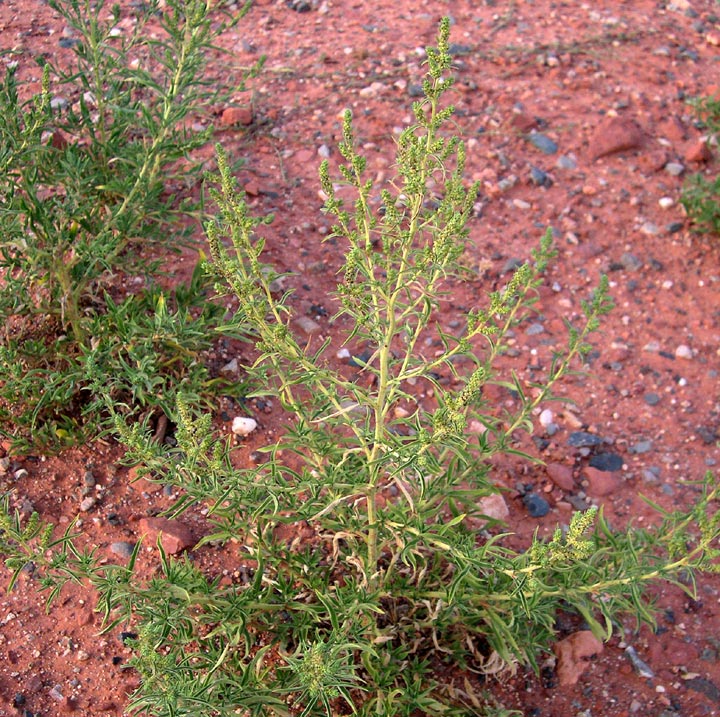Bassia scoparia
- Family: Chenopodiaceae
- Common Name: burningbush
- Symbol: BASC5
- Description: Duration: Annual Nativity: Non-Native Lifeform: Forb/Herb General: Herbaceous annuals, to 1.5 m tall, stems striated, erect and much-branched, herbage somewhat arachnoid with scattered, long hairs. Plants are dark green when young and turn bright red with maturity. Leaves: Alternate, sessile, lanceolate, 2-10 cm long and <1-12 mm wide, acuminate at the tips, margins entire, blades thin and flat. Flowers: Inflorescences are interrupted spikes, both terminal and axial. Flowers are sessile and subtended by leaflike bracts. Flowers greenish, small (1 mm), perfect, with five nearly triangular sepals, no petals, 5 exserted stamens and 2 to 3 stigmas. Fruits: Single seed enclosed in the persistent, incurved sepals. Sepals with a short, horizontal wing on the outer side of each. Wall (pericarp) not adhered to the seed, membranous. Seed horizontal, brownish, 1.5 mm wide, wedge-shaped, flat, slightly ribbed. Ecology: Found on saline or alkaline soils, in fields, pastures, rangelands, and disturbed areas, among sagebrush, desert scrub, chapparal, and pinyon-juniper grasslands and shrublands, from 2,500-10,000 ft (762-3048 m); flowering June-October. Distribution: Native to Eurasia, is an escaped cultivar and widespread in the United States. In the Southwest it is an incredibly common weed in the middle to upper elevations. SEINet Portal Network. 2020. http//:swbiodiversity.org/seinet/index.php. Accessed on November 02.
Additional Images
- There are no additional images for this species.
